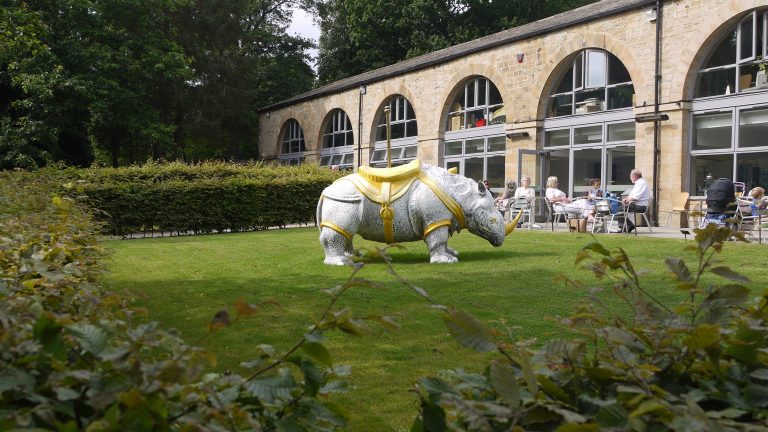However Incongruous | 2011
Fibreglass (160 x 92 x 320 cm) | Print
Albrecht Dürer came across rumors of the Indian rhinoceros named Gainda sometime in 1515 that he would immortalize in his woodcut, Rhinoceros. Gainda the rhinoceros, far from his native habitat in the grasslands of Gujarat (where no rhinoceroses remains today), was sadly lost at sea while being transported, in time, from Lisbon to the Vatican.
The Gulbenkian Gardens stand on a piece of land that was once used for a fun-fair. What is now a quiet and serene garden, an organic machine designed for leisurely contemplation, would once have been a busy, bustling, noisy site for the carnivalesque, for flirtation, and for the pursuit of thrills. The sudden re-appearance of Gainda the lost rhinoceros in the Gulbenkian Gardens allows the space to be haunted by its own past.
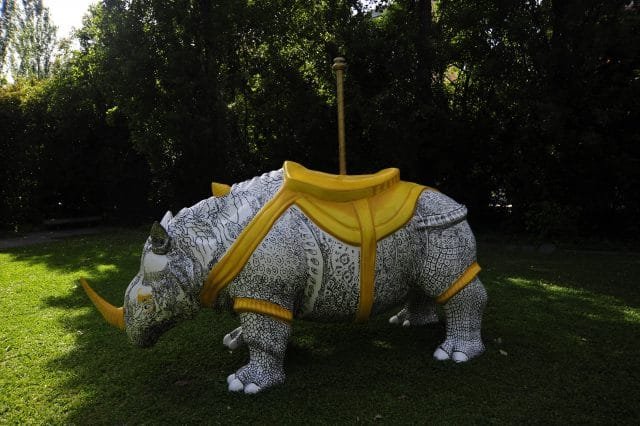
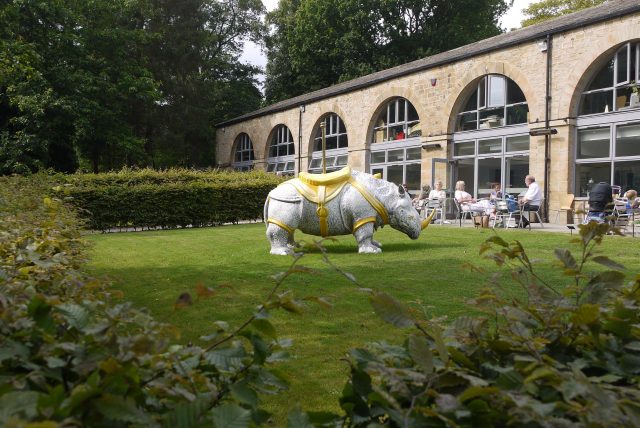
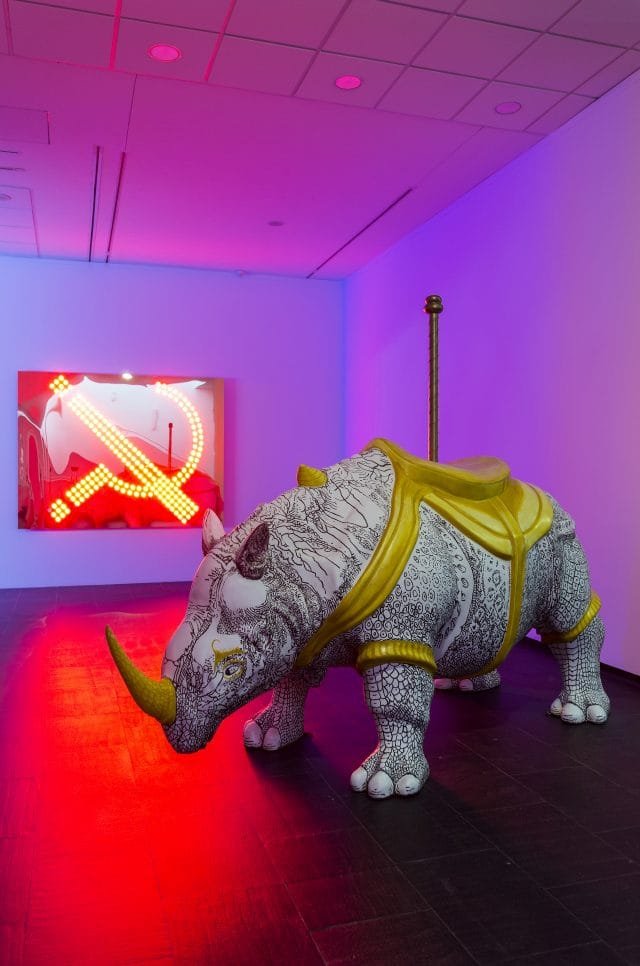
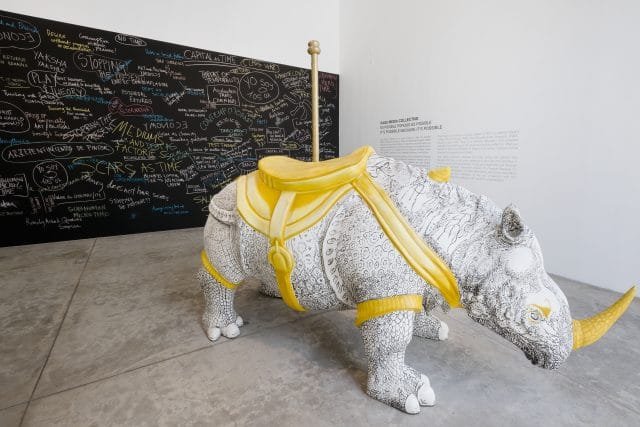
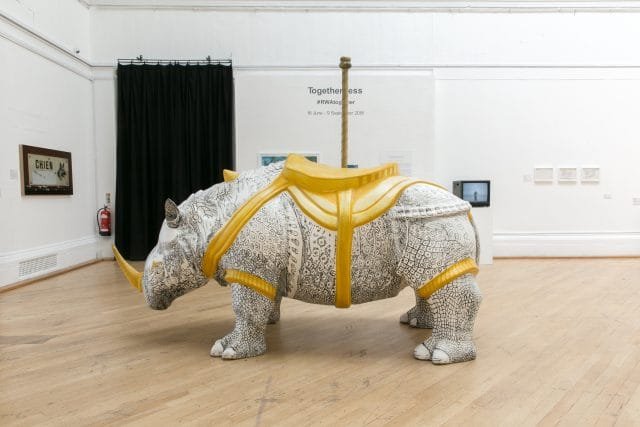
…

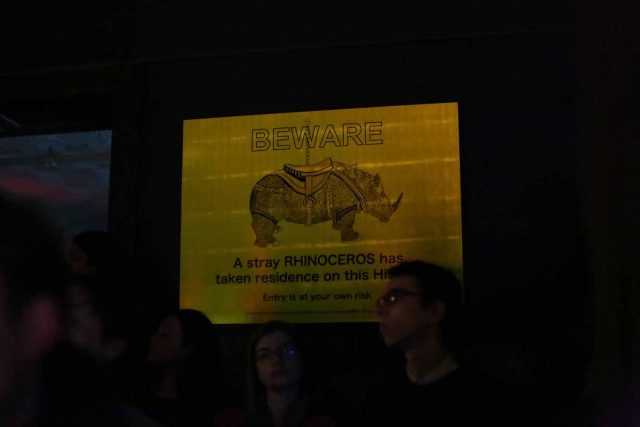
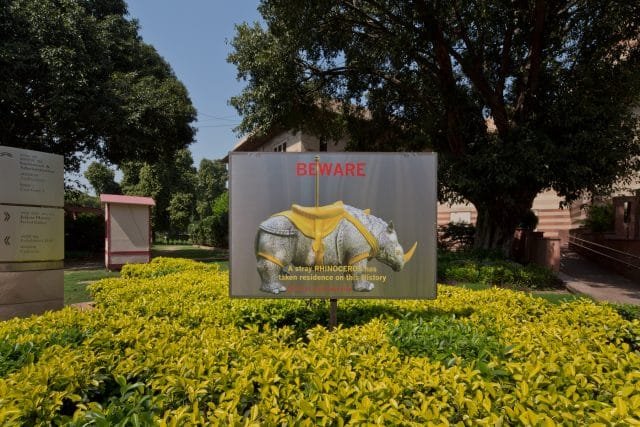
Text from catalogue:
In the 16th century, the king of Malabar gifted a rhinoceros to the king of Portugal. This rhinoceros travelled all the way to Portugal and, upon arrival, the Portuguese king decided to gift the rhinoceros to his cousin, the Pope. The rhinoceros was shipped out from Lisbon to Rome, but was shipwrecked and lost at sea. Years later, and with no rhinoceros in Europe, Albrecht Dürer – Northern Renaissance painter, engraver, printmaker, mathematician, and theorist from Nuremberg – was commissioned to make a piece about this story. Dürer, who had never seen a rhinoceros, immortalised the rhinoceros in his woodcut titled ‘Rhinoceros’. A ghost of our time in the future and the echo of times past in today, Gainda the rhinoceros appears often in Raqs’ works.
In 2011, Raqs was invited to intervene in the gardens of the Gulbenkian Foundation in Lisbon. The gardens were once a fairground; Raqs imagined Gainda as a fiberglass life-size sculpture of Albrecht Dürer’s etching transformed into a carousel carriage. With this work, called ‘However Incongruous’, Gainda reappeared in Portugal, far from his native habitat of the grasslands of Gujarat (where no rhinoceroses remain today).
‘Dürer is Innocent’, reworked and named for the first time for ‘Asamayavali/Untimely Calendar’, first appeared as a billboard during ‘The Last International’, a performed installation, Performa 13, New York, 2013.


